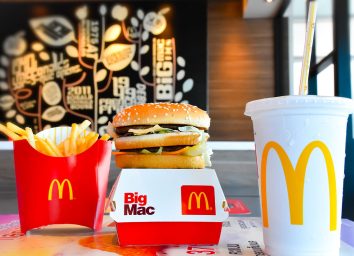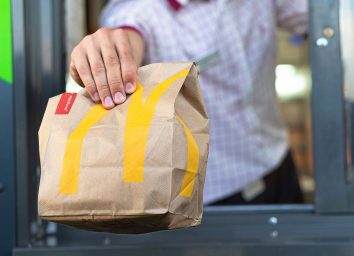30 Ordering Hacks to Cut Calories When Dining Out
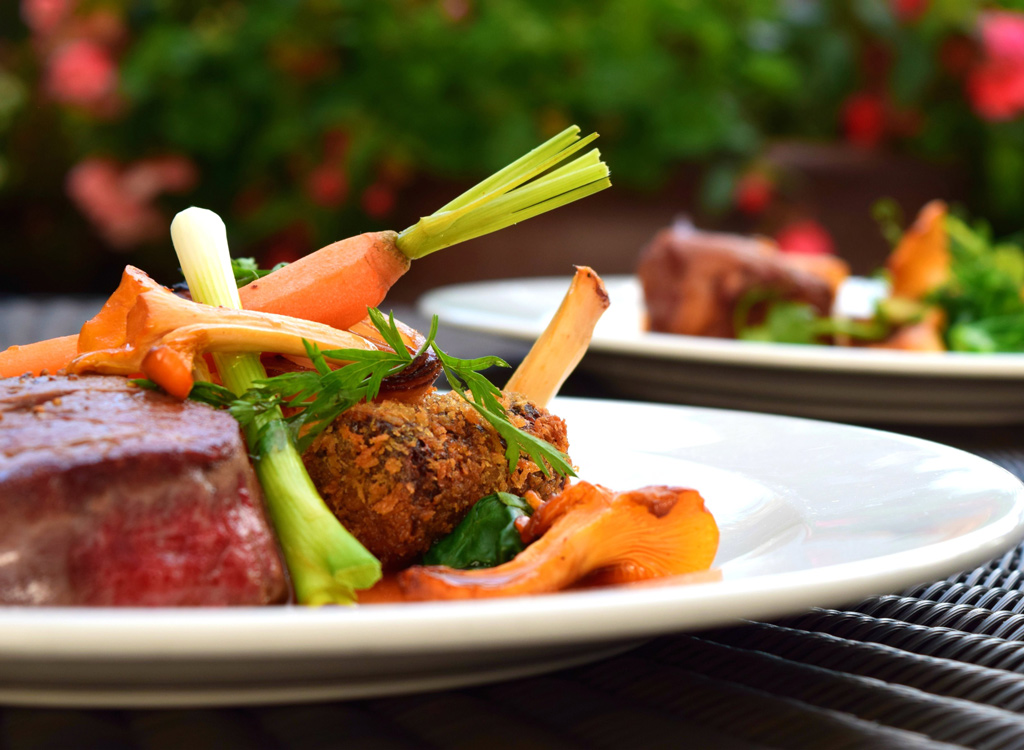
Going out to eat is fun and festive but that doesn't mean you should let loose and order all the food, right? Of course, there are times to indulge, but studies show that eating out—whether it's at a restaurant, fast-casual outpost, or a fast food joint—leads to a greater daily intake of calories, saturated fat, cholesterol, and sodium. Rest assured, though, that if you arm yourself with a few simple strategies, you can build a more well-balanced meal with all the eating joy—just fewer calories.
Here, nutritionists and dietitians chime in with their top ordering tips that will slim down any meal. Some tips (like skipping the bread basket or ordering the dressing on the side) might already be your go-to restaurant hacks while others (ordering the salad may not always be your best bet) may arm you with a new perspective on eating out. At the end of the day, it's all about balance and picking healthy and delicious foods that will make you feel full rather than deprived.
Scroll down for fail-safe ordering tips, and find out which other foods might not be as nutritious as you think with these 30 Health Foods That Aren't Really Healthy. And if you want healthy recipes, supermarket shopping guides, and essential nutrition tips at your fingertips, subscribe to the new Eat This, Not That! magazine now! For a limited time, you can save 50 percent off the cover price—click here!
Plan Ahead

"The biggest thing is to have a plan before you even walk in the door," says Matt Weik, BS, CSCS, CPT, CSN, owner of Weik Fitness. "Know what items are on the menu that you are interested in and how you are going to ask to have them prepared." Whether it involves requesting the cod baked rather than fried or ordering a side salad instead of French fries, going in with a plan can help prevent you from making last-minute calorie splurges.
Don't Go to the Restaurant Starving
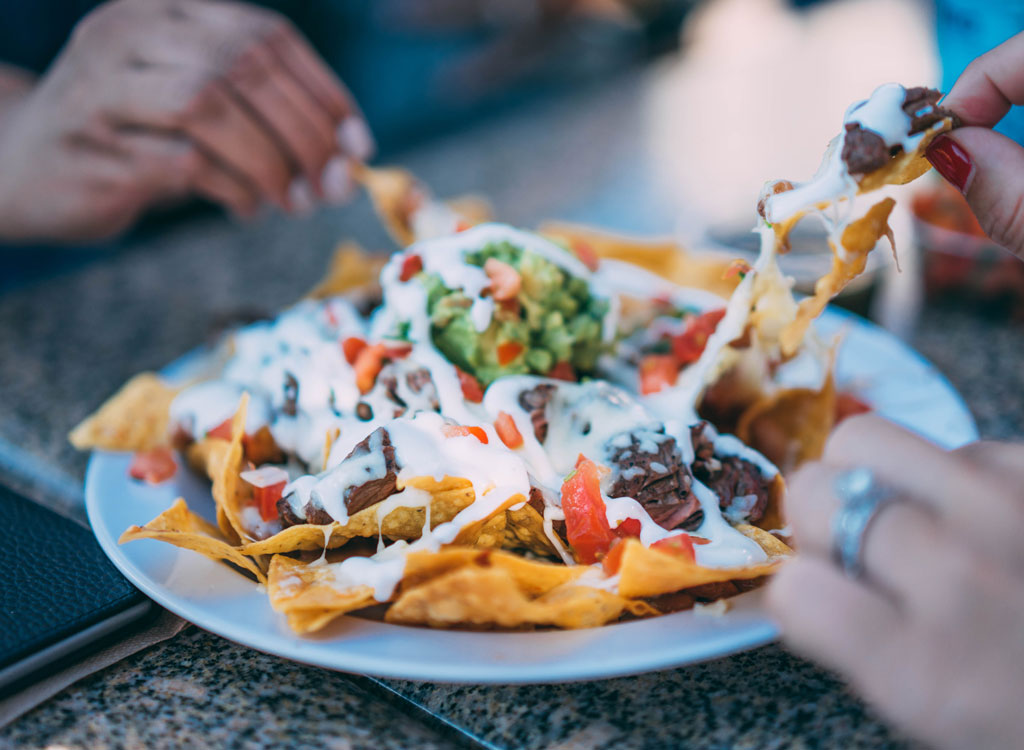
Don't indulge in a full meal right before heading out to eat, but try not to go famished either. "You are more likely to order carbohydrate-heavy, unhealthy meals and indulge in the bread basket while you wait for your food," says Michelle Routhenstein, MS RD CDE CDN, owner of Entirely Nourished, a private nutrition counseling and consulting practice. "If you go to the restaurant slightly hungry, you are more likely to read through the menu and choose a better option."
Ordering Order Matters
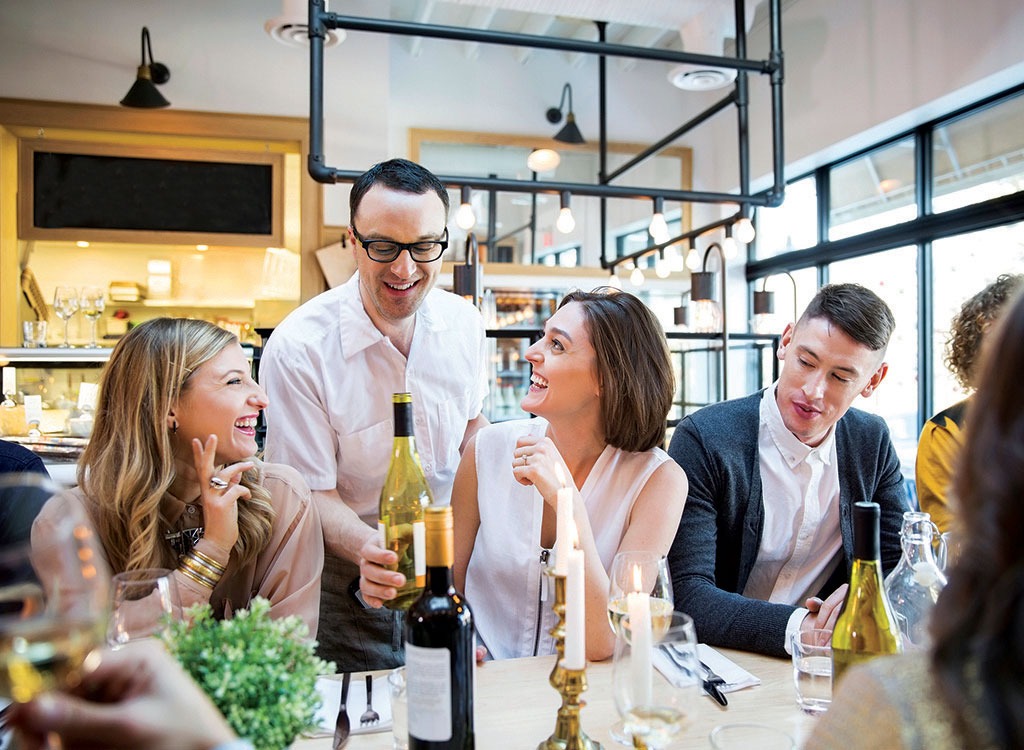
Rather than allowing the waiter to jot down everyone's order before he gets to you, volunteer to go first. "When you order first, you are more likely to stick with your healthy eating goals, rather than being influenced by the options that your meal mates may make," says Julie Upton, MS, RD, a Bay area-based registered dietitian and co-founder of Appetite for Health. "However, if you're out with a group of health nuts, then you can order last, as their positive choices will be reflected in how you order."
Pay Attention to Descriptions
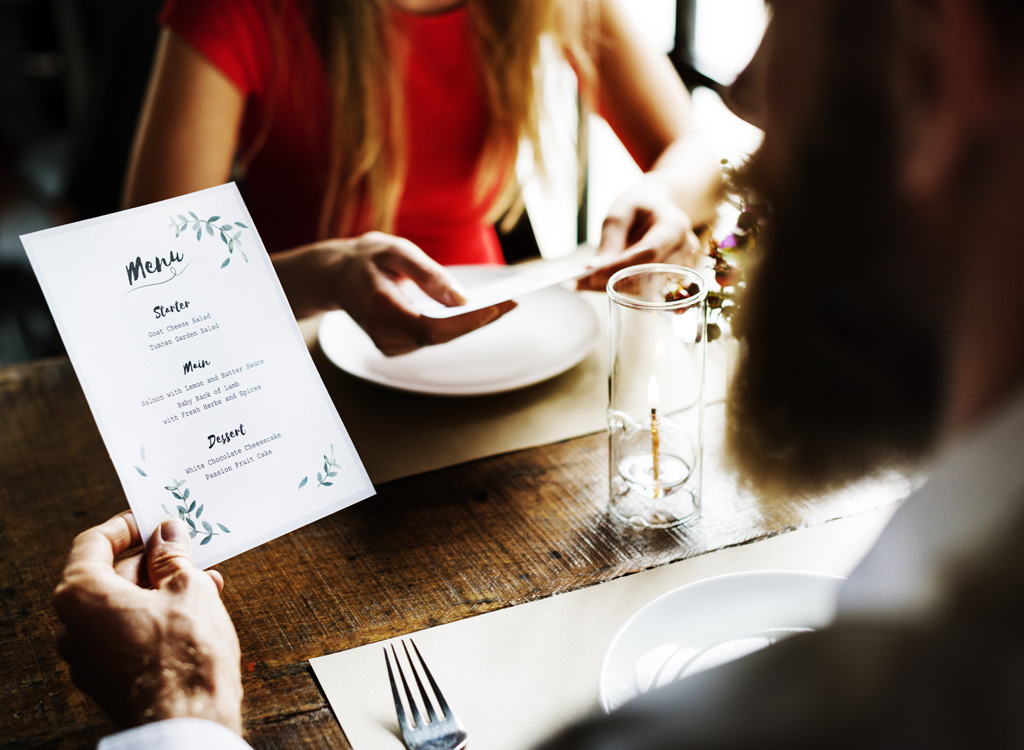
"Food that is described as 'crispy,' 'buttery,' 'pan-fried,' 'au gratin,' 'creamy,' or 'a la mode' signal calories," points out Becky Kerkenbush, MS, RD-AP, CSG, CD-Media Representative for the Wisconsin Academy of Nutrition and Dietetics. "Look for foods that are baked, steamed, grilled, roasted, or poached."
Ask Questions
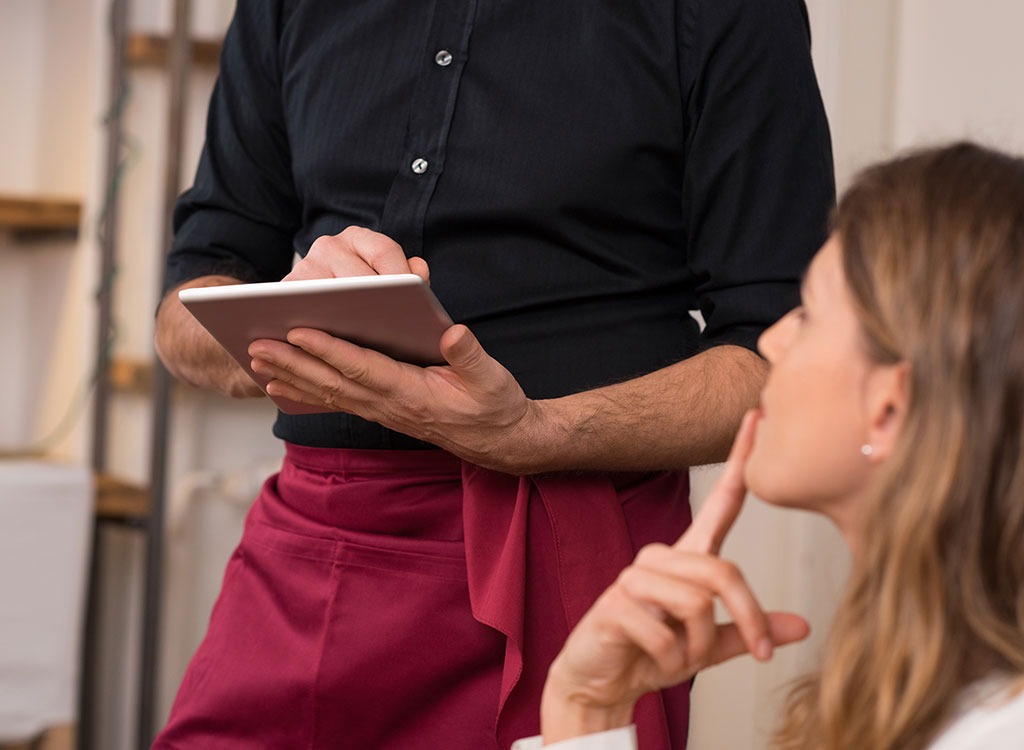
Your waiter is there to help, so don't be afraid to ask questions that will help you make the healthiest decisions. "Inquire how a food is prepared," says Kerkenbush. "Does the baked potato come with sour cream and butter? If so, ask to omit those calorie traps or have them come on the side."
Load Up on Veggies First
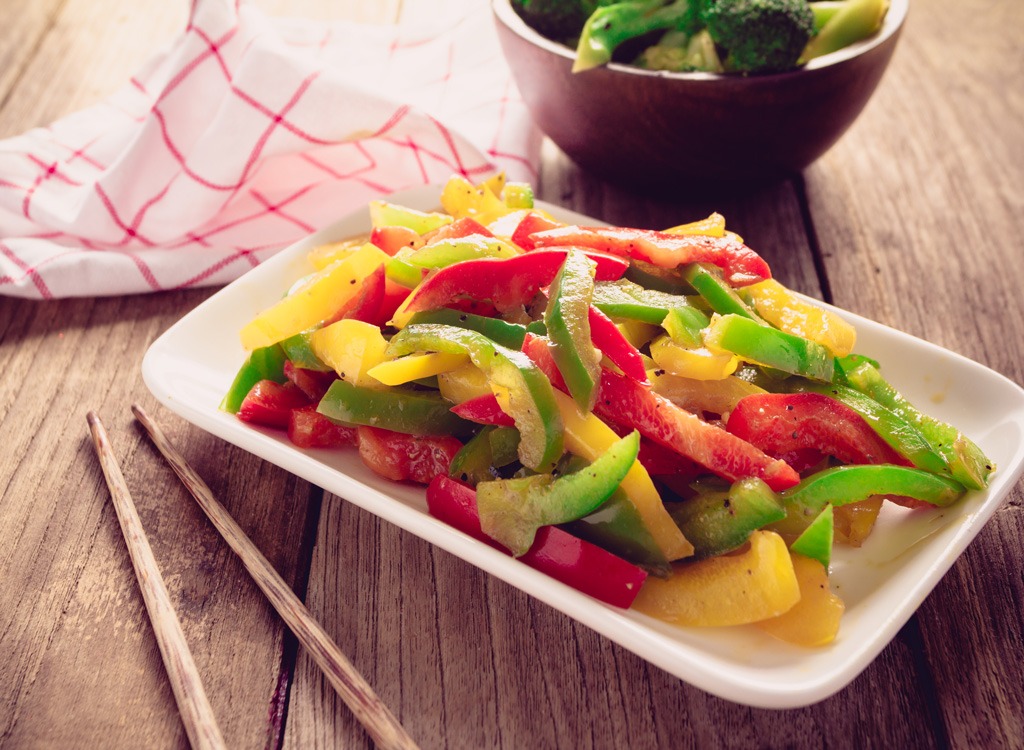
"My top tip when ordering in or eating out is to start with the vegetables first," says Sunny Brigham, MS, CNS, a board-certified nutrition specialist in North Texas. "Veggies prepared at restaurants aren't always as healthy as they are when you make them in your own kitchen, but they're a much better option over fries or a loaded baked potato. When consuming the veggies first, you're reducing your hunger and filling up your stomach with a low-calorie, nutrient-dense food. By the time you go to dig into the meat or the pasta, you'll find you eat less of it."
Get Dressing on the Side
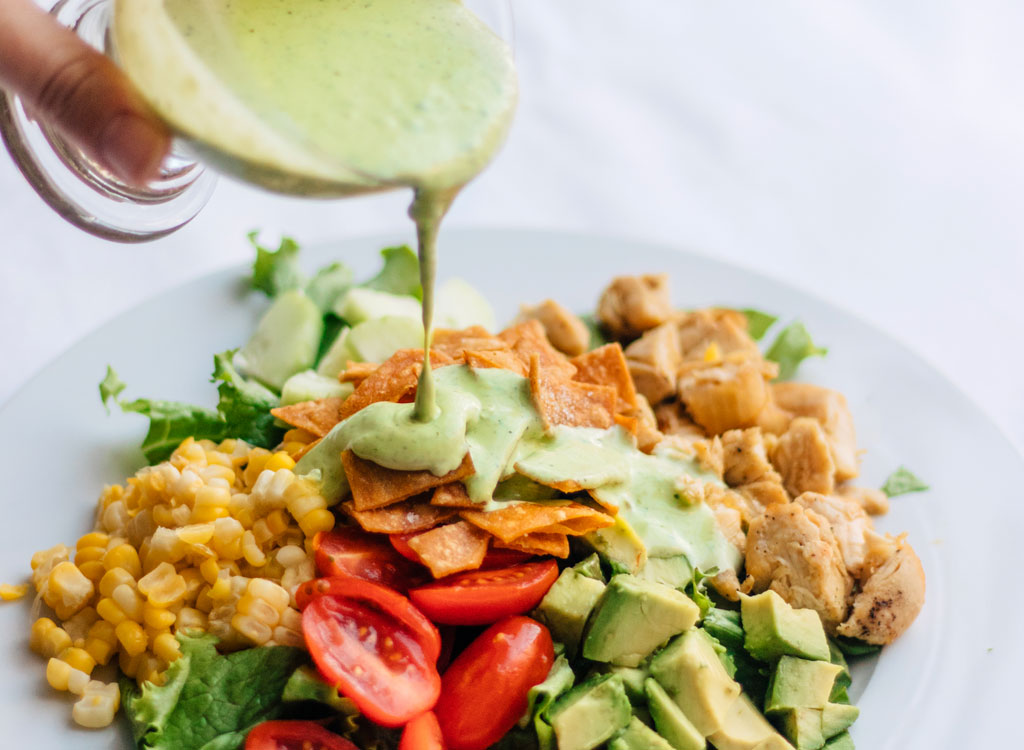
This may not be revolutionary to anyone who's ever been on a diet but asking for your salad dressing on the side can help drastically cut calories. "My favorite is to 'fork dip' salad dressing," says Lauren Harris-Pincus, MS, RDN, and owner of Nutrition Starring YOU. "By getting it on the side and vertically dipping your fork into the dressing and then stabbing your bite of salad, you will use a fraction of the dressing that either you or the restaurant would have poured onto the salad."
Lighten Up the Salad
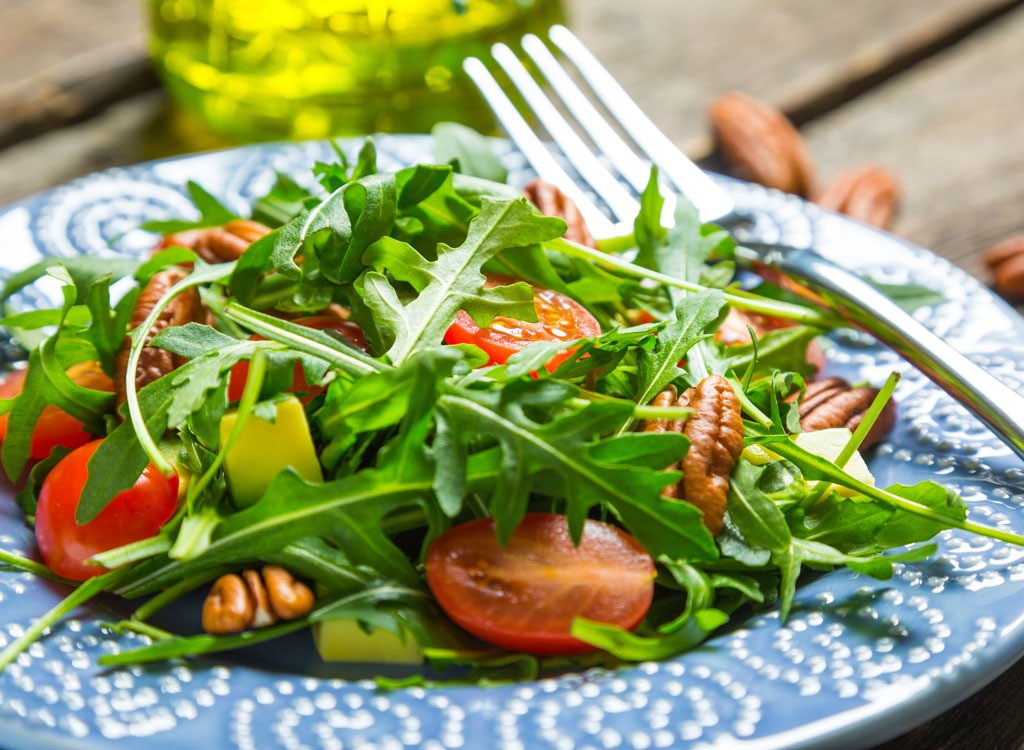
Salad sounds like a healthy option, but depending on what's in it, even your bowl of greens can get junky fast. "Ensure it's got lots of veggies," advises Brigham. "I'd skip the cheese and croutons and go for a vinegar-based dressing." Besides avoiding sugar-laden salad dressings and toppings, find out how you can drop pounds fast and live a healthier life with The 14-Day No Sugar Diet.
Or Skip the Salad All Together
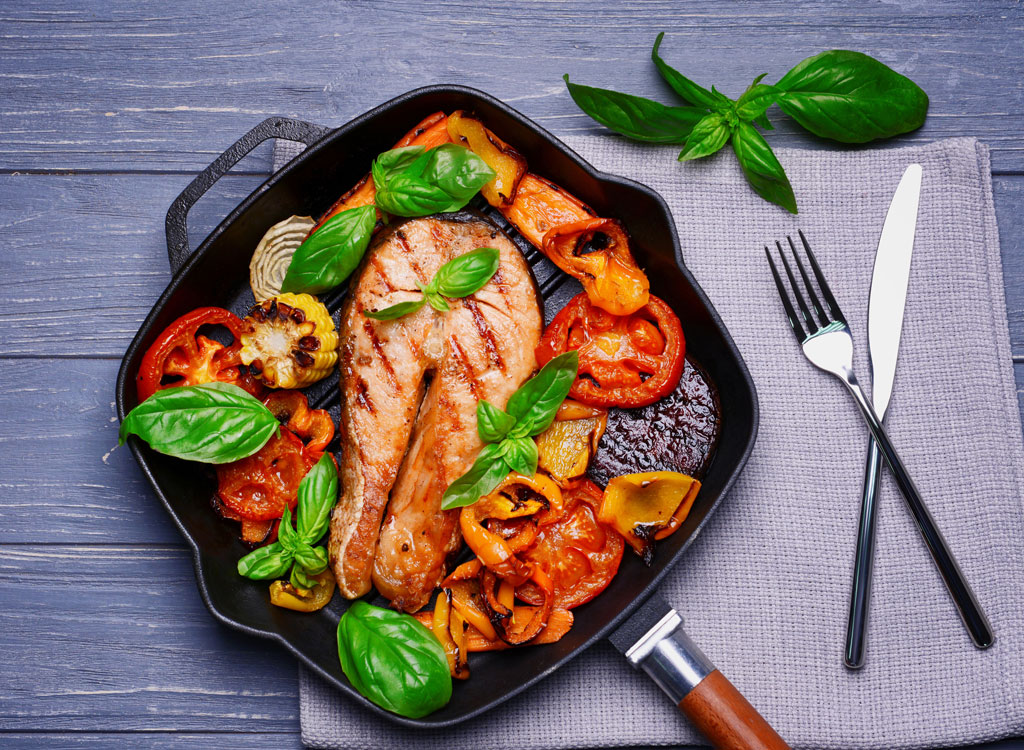
"Swap the salad with a side of vegetables," suggests Nancy P. Rahnama, MD, MS. "A side of sautéed, steamed, or roasted vegetables can be a better option than the side salad. Side salads often have more ingredients such as dressing, croutons, nuts, and cheese that will make them more caloric and higher in sugar when compared to the high-fiber side of vegetables."
Soup's On
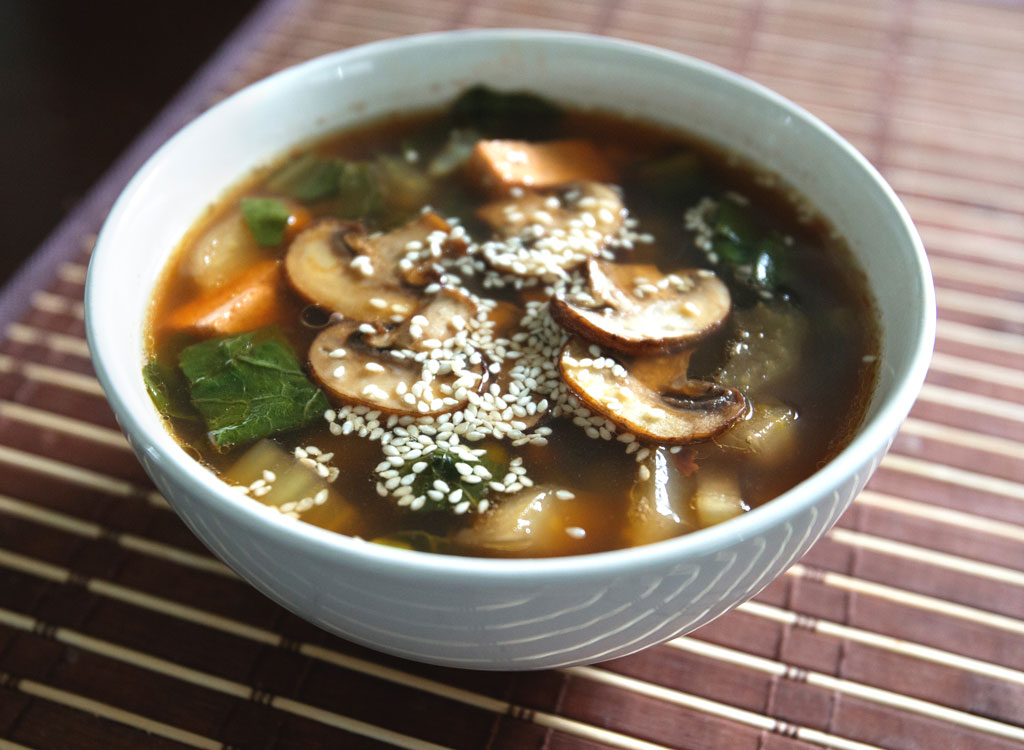
Not feeling a salad for starters? Opt for a filling, healthy soup instead. But the key is to skip the cheese, cream, and other heavy ingredients, and opt for a broth-based soup instead. "Eating a soup (or salad) before a main course helps fill you up on fewer calories so you'll eat less of the calorie-rich meal options," says Upton.
Stick with Appetizers
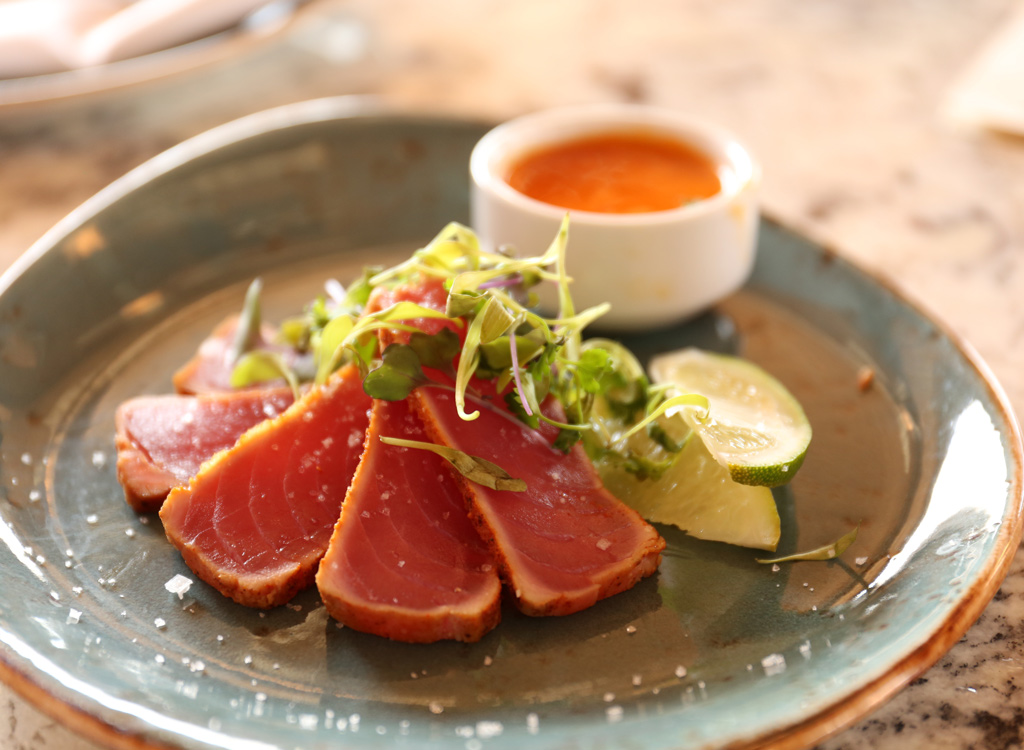
Don't feel like you need to order a main. "Picking appetizers instead of entrees can save you calories due to decreased portions. Just make sure to skip the fried food and creamy dipping sauces," says Kerkenbush. As a bonus, it'll save you money, too! Alternately, Jennifer Scheinman, RDN, of Simply Nourished, recommends ordering a la carte. "Often you'll find delicious veggie options as side dishes. Some of my favorites include roasted Brussels sprouts, sauteed spinach, and steamed broccoli."
…Or Skip Them
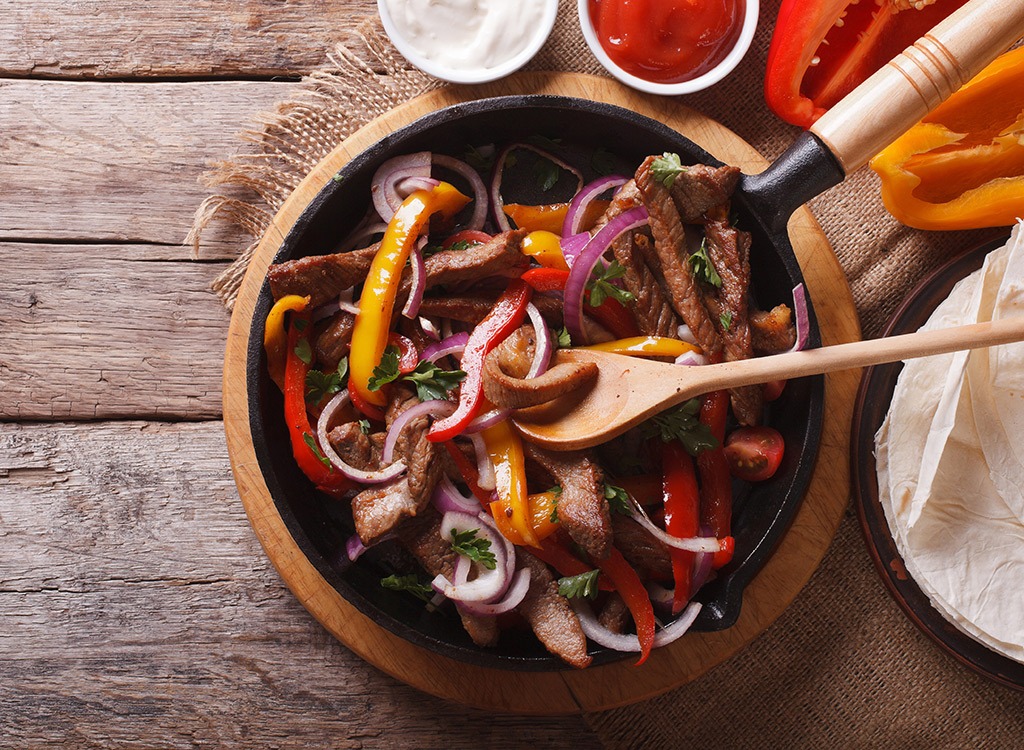
If you do opt for a main course, then avoid the appetizers, Rahnama tells us. "Most often, the appetizer has more sugar, fat, and carbohydrates than the entrée. Additionally, an appetizer in addition to an entree is exactly what you do not need when trying to maintain a healthy weight."
Protein Power
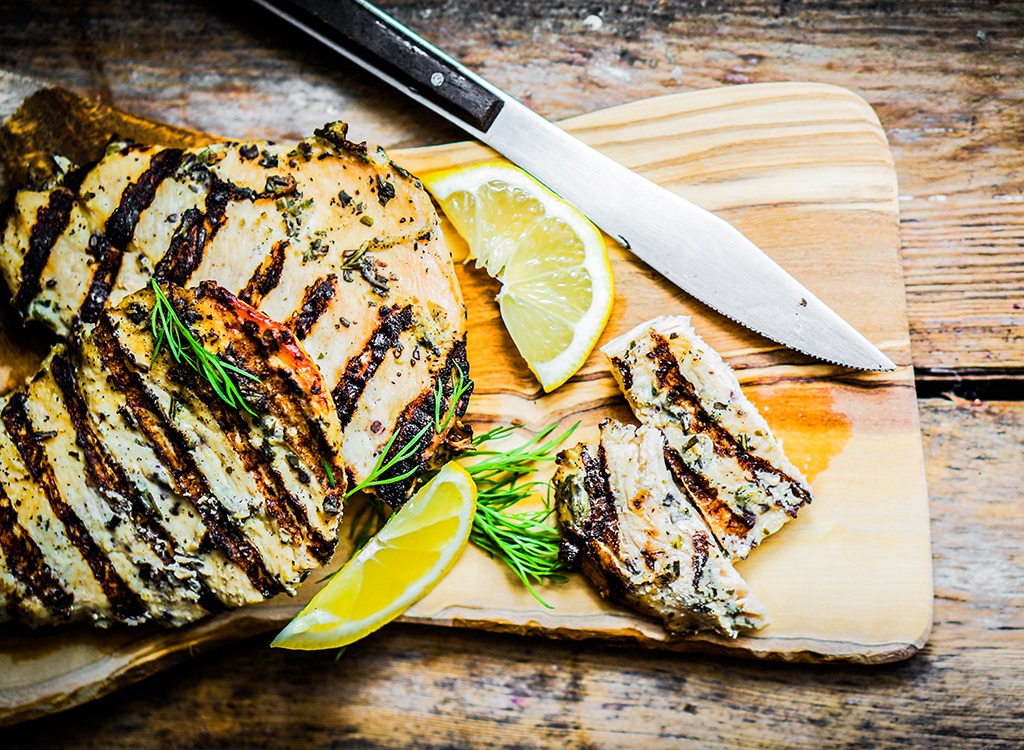
When it comes to ordering, think lean. "Pick a food that is high in protein," says Rahnama. "Pick an entrée that is a fish, meat, or poultry to aid in satiety and limit the number of carbohydrates you eat."
Watch the Sodium

We tend to be focused on calories and fat when eating out, but it's also important to be mindful of sodium, says Annessa Chumbley, registered dietician and American Heart Association Healthy For Good spokesperson. "Ask for your food to be lightly seasoned, and be careful about higher-sodium items such as soy sauce, salad dressings, pickles, and other condiments," she advises.
Portion Control
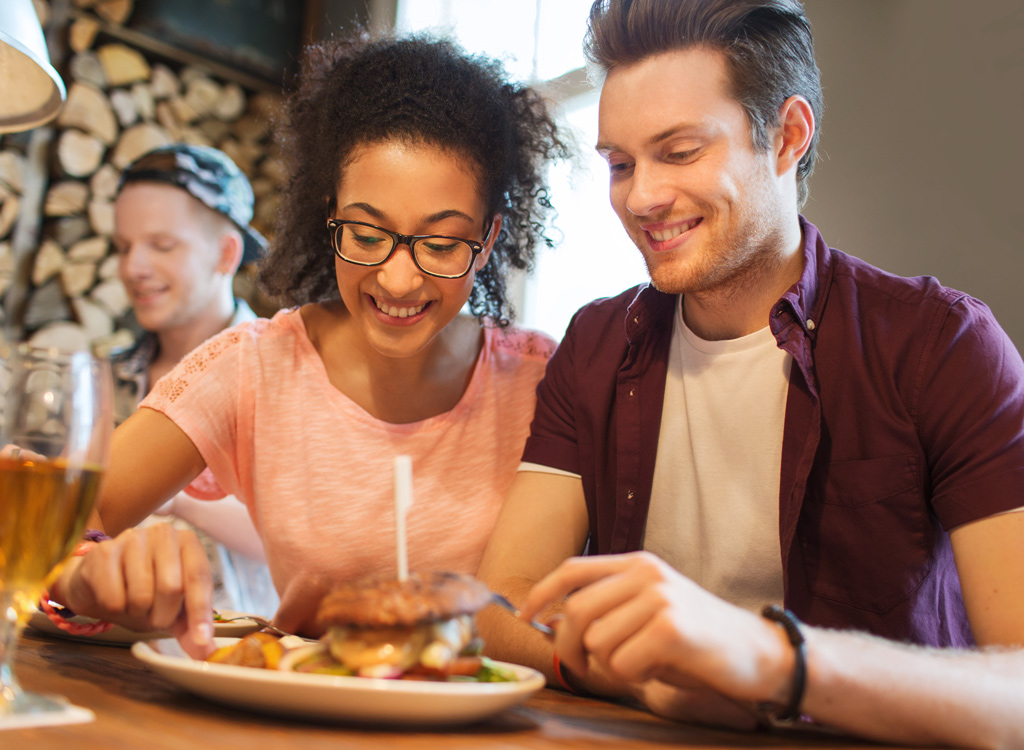
Routhenstein echoes the importance of portion control. "Many restaurants serve double or triple the food that you need. Order half-sized portions, share an entrée, or choose two healthy appetizers instead of an entrée for your main course," she advises.
Resist the Bread and Chips
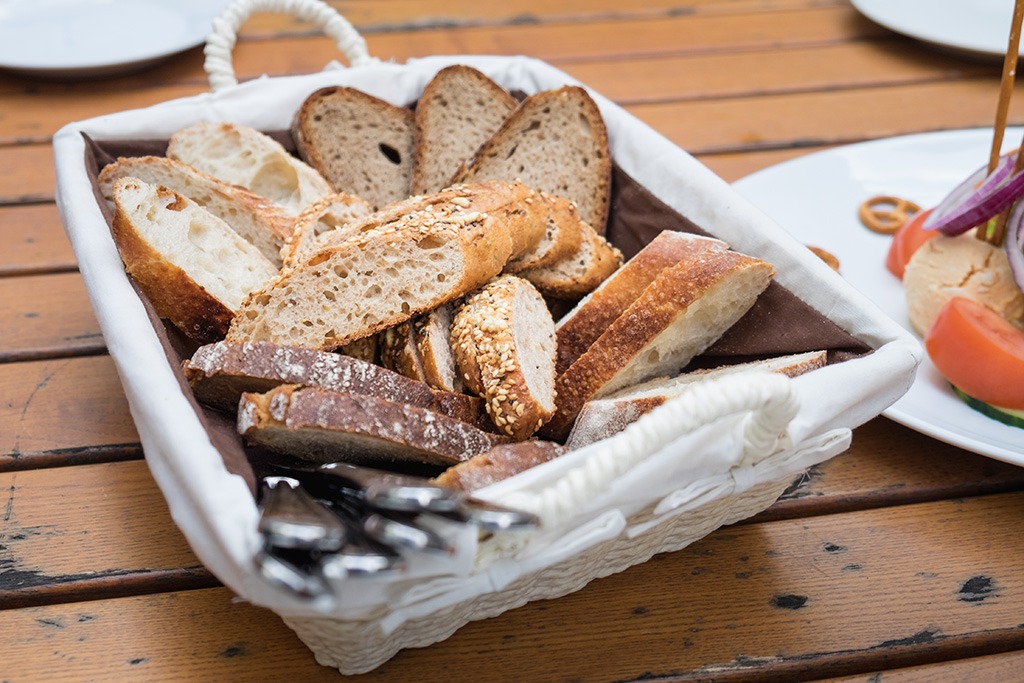
Even though a little complimentary nibble as you peruse the menu is tempting, Kerkenbush urges you to resist. "Ask your server to forgo the breadbasket or chips offered to you." Similarly, Rahnama notes that some restaurants will offer crudité in place of bread. "If guacamole is brought to the table, ask for a side of vegetables to enjoy it with and say no to the tortilla chips," she urges.
Enjoy Your Food as Is
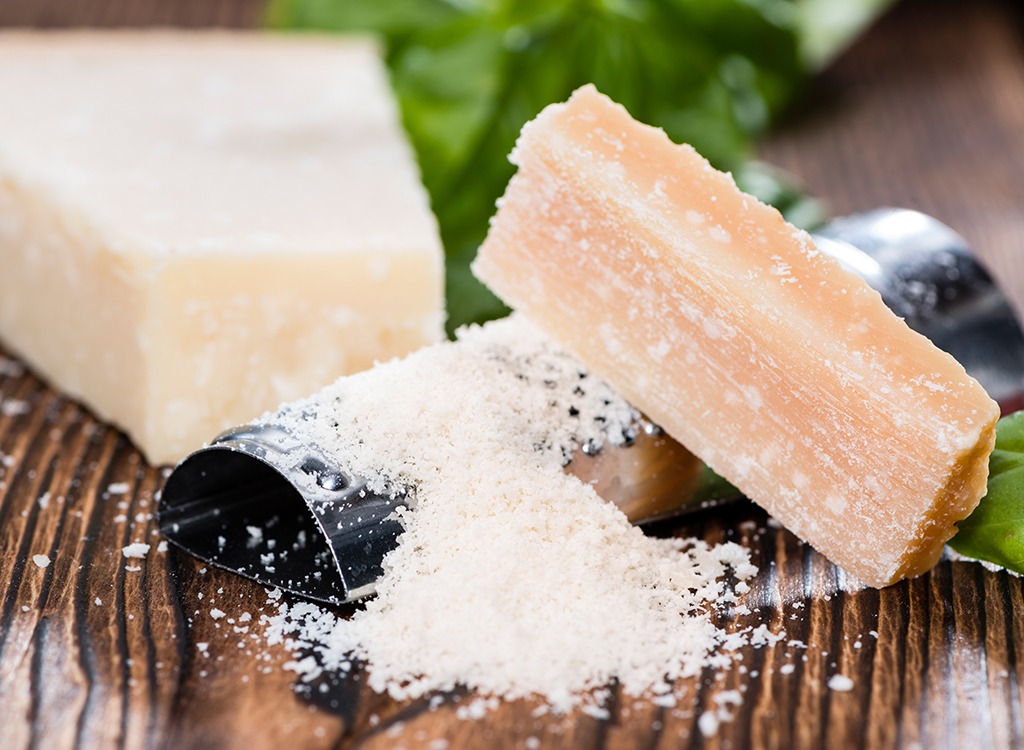
If you are going to have a nibble of bread, hold off on the butter. If you're having Italian food, then say "no, thank you" when they come around with grated Parmesan. Most of the time, these extras are hardly necessary and only add unnecessary calories.
It's All About Balance
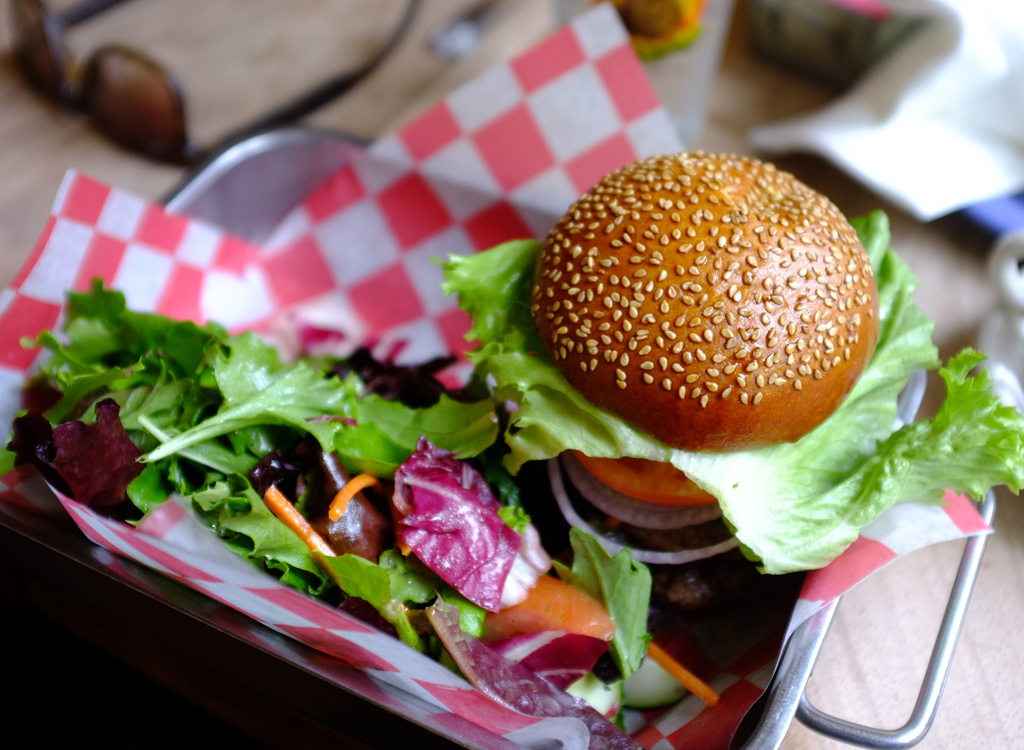
"Listen to your body's needs and choose foods that satisfy your hunger," recommends Jennifer Heinen, MS, RDN, LDN of Nourish for Life in the Boston area. "A balanced plate that includes protein, vegetables or fruit, and a carbohydrate will fill you up and prevent overeating. For instance, if you are dining out on the go, having a salad, fruit, or vegetable side with a hamburger can make your meal more filling." Want to step things up a notch? Order the burger bun-free.
Substitutions Are Your Friend
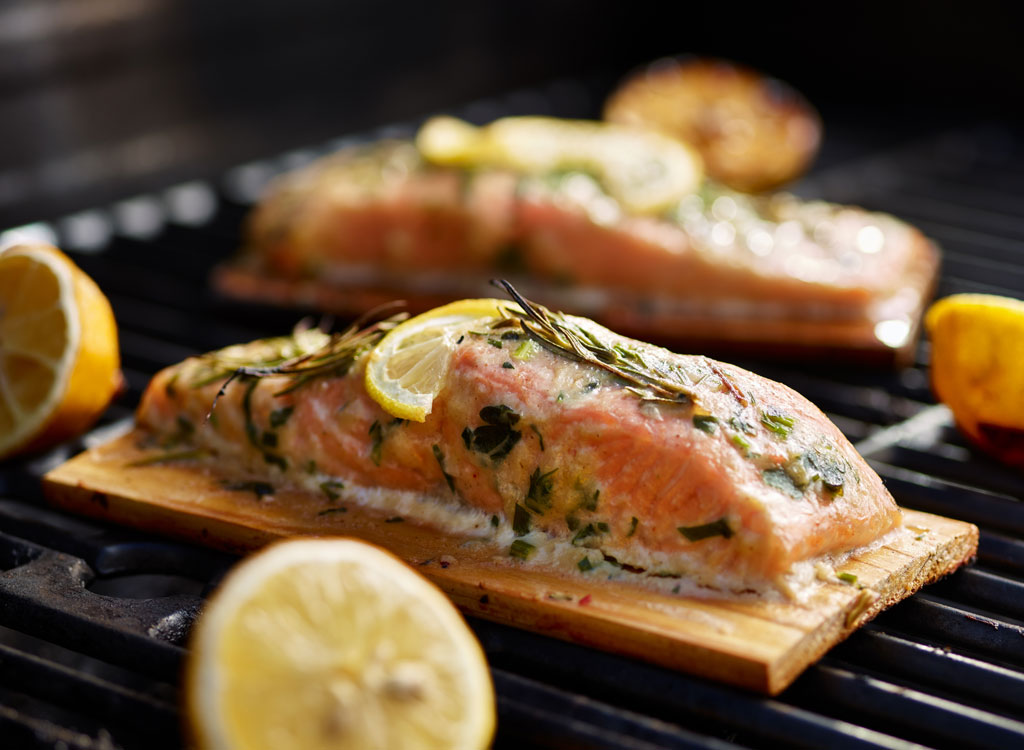
"Don't be afraid to ask for what you want," says Scheinman. "Most places will prep the meal the way you want it, so don't be afraid to order off the menu. Some places may charge a small fee for a substitution, but usually, the price is modest and worth you getting what you really want. Sub fries with a vegetable, ask for grilled instead of fried, skip the rice and get extra veggies, ask for sauces and dressings on the side, order burgers without a bun or in a lettuce wrap, and try one or two healthy appetizers as your main meal."
Avoid Value Meals
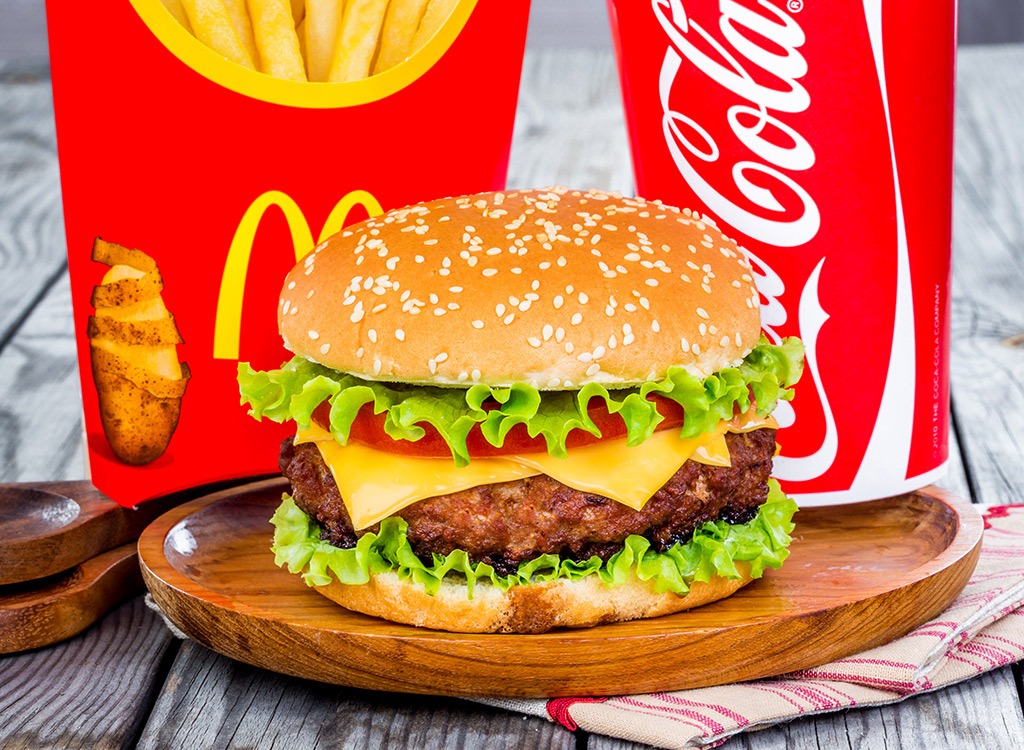
"Never go for a 'value' meal or an upsold item," says Upton. "Fast food and fast-casual restaurants often have add-ons. Skip these as they are usually inexpensive, high-calorie options like salty chips or soda."
Be Mindful of Your Beverage

"You can't forget liquid calories," reminds Weik. "No shock here, but stick to water if you truly want to lose weight."
Skip Cocktail Hour

If you are going to enjoy an adult beverage, have it with your meal instead of as an aperitif. "Don't drink alcohol before your meal," says Upton. "Studies show that drinking alcohol before restaurant meals increases the calories that you'll eat because it stimulates your appetite while reducing inhibitions (hello, French fries)."
Mix Up Your Mixers

"Dining is very celebratory and usually enjoyed with a cocktail," points out Rahnama. "Have your drink mixed with soda water and lime instead of opting for a sugary drink in order to significantly lower the amount of sugar you have. This will also decrease your chances of getting a hangover the next day."
Box it Up
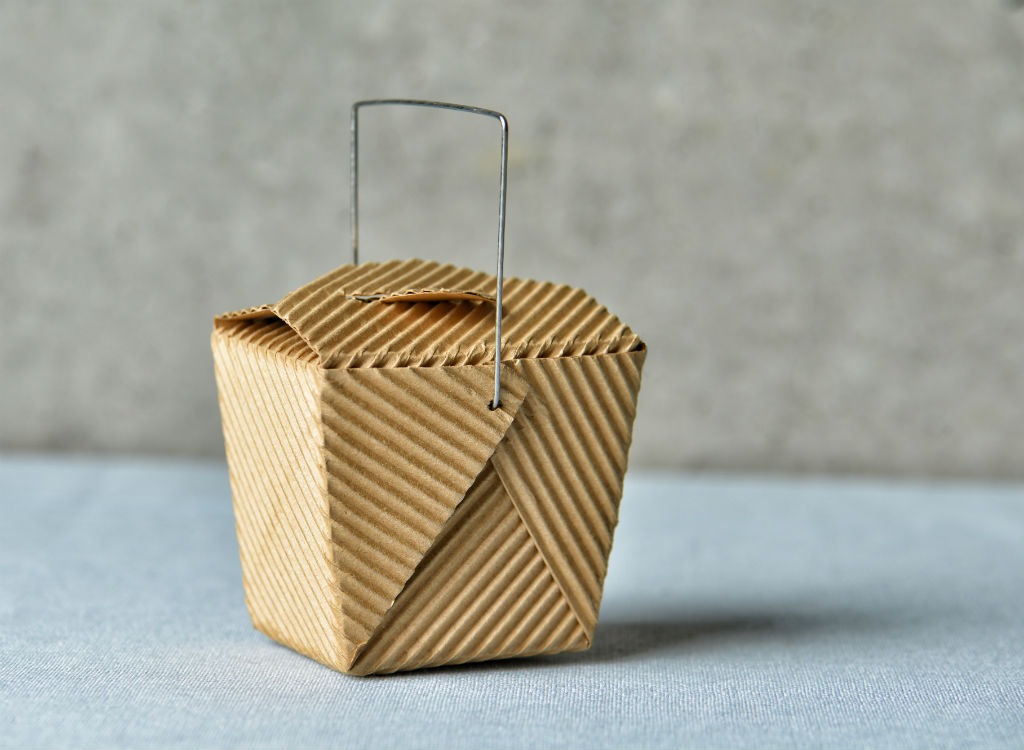
Don't wait until the end of your meal to get that to-go box, advises Chris Shuff, RDN, LDN of Full of Love and Fire. "Once the dish you ordered is served, assess the portion size, the ratio of meat to starch to vegetables, and then decide whether to have a box brought to the table immediately. You want to make about half your consumed portion veggies and box up whatever else is left for later."
Shy Away from Sweets
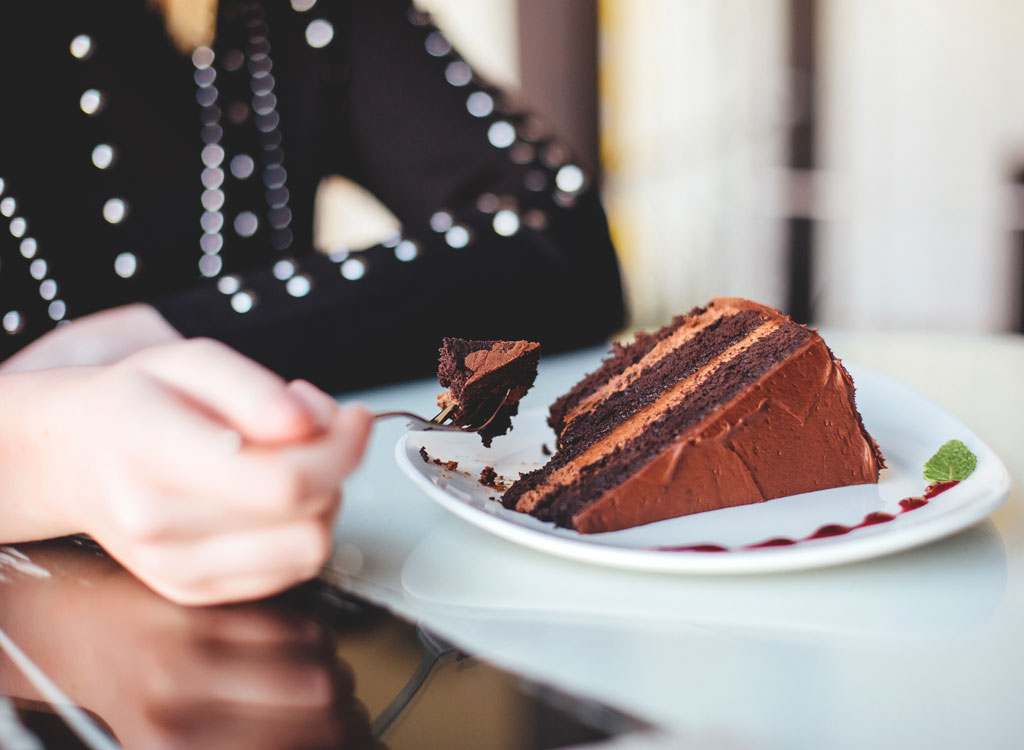
Dessert can be one of the biggest calorie culprits of the whole meal, so consider carefully. "Skip dessert or opt for fruit, sorbet, or just coffee," suggests Kerkenbush.
Savor the Meal
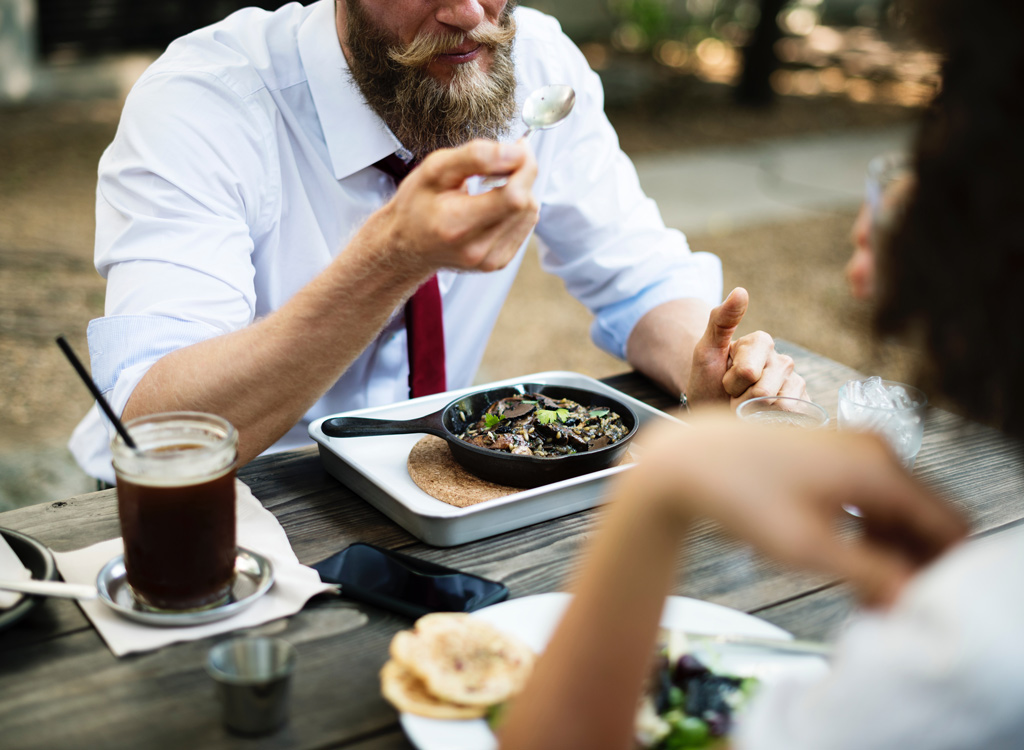
Whatever you end up ordering, enjoy every bite and don't rush. "It sounds silly, but take your time and chew your food thoroughly," says Chumbley. "Digestion starts in the mouth! Not only will this aid digestion, but it helps you eat slowly, and that will give your mind time to feel full."
Listen to Your Body
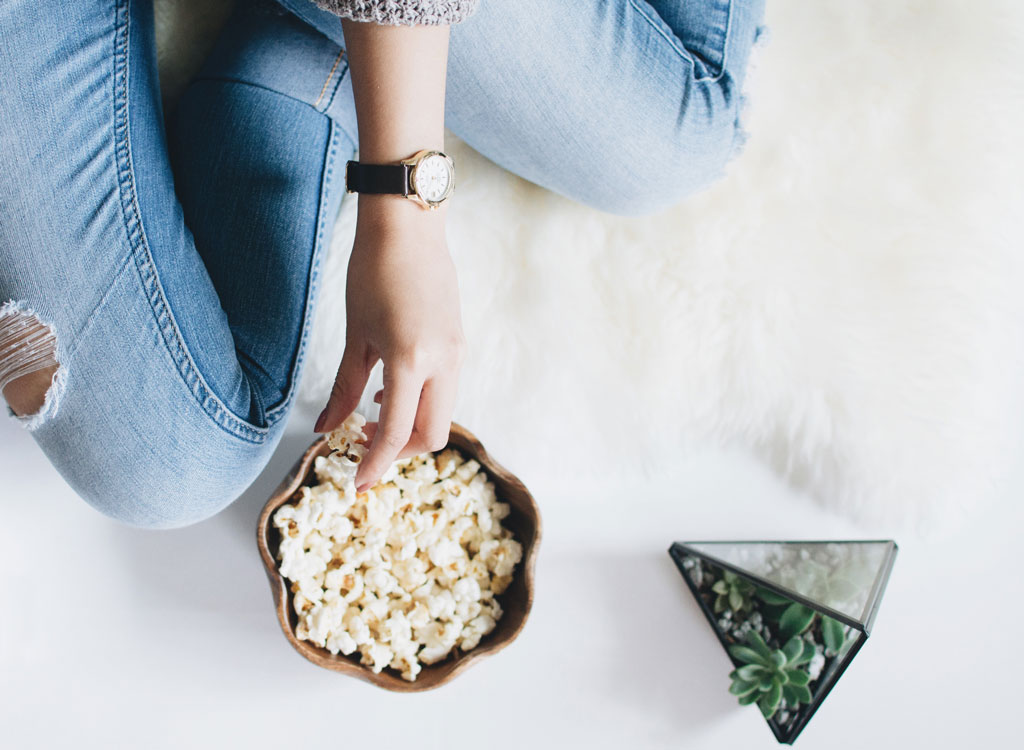
It might sound like common sense, but stop eating when you're full. "Listen to your hunger cues and stop eating when you are just satisfied," advises Routhenstein.
Take a Break
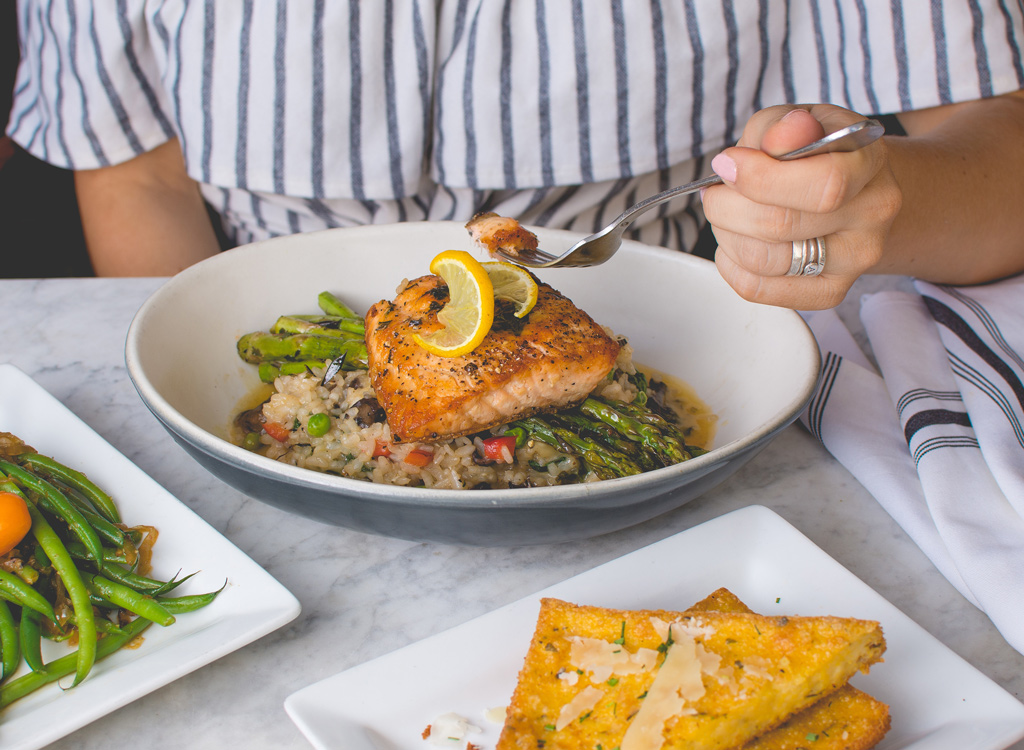
When in doubt, put your fork down for a few minutes to determine whether or not you need to continue eating. "It takes 20 minutes for the signal from your gut to tell your brain that you are full. When you eat too quickly, you will likely overeat before you feel the signal," says Rahnama.
Train Your Taste Buds
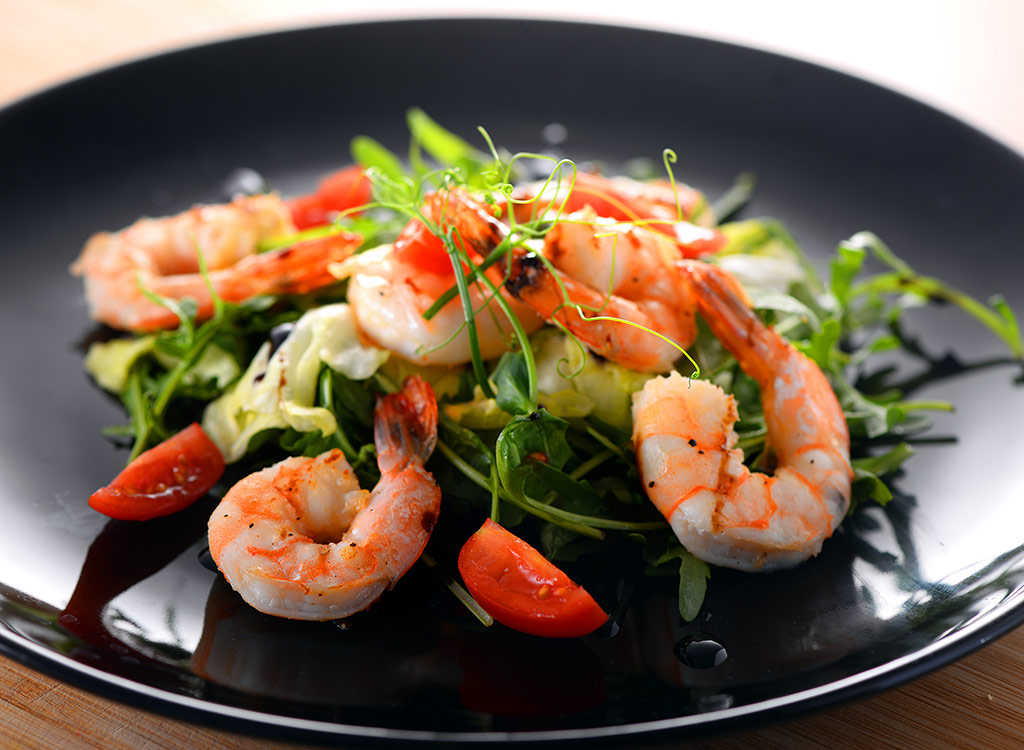
When it comes to training your taste buds to enjoy healthy foods, try, try, and try again, says Chumbley. "Stay encouraged, because even if you don't have a 'taste' for more healthful food right now, just keep re-introducing healthful foods and better cooking methods, and you'll grow to love them in no time," she advises. "Your taste buds are always changing. Maximize on that!"
Let Yourself Indulge Sometimes
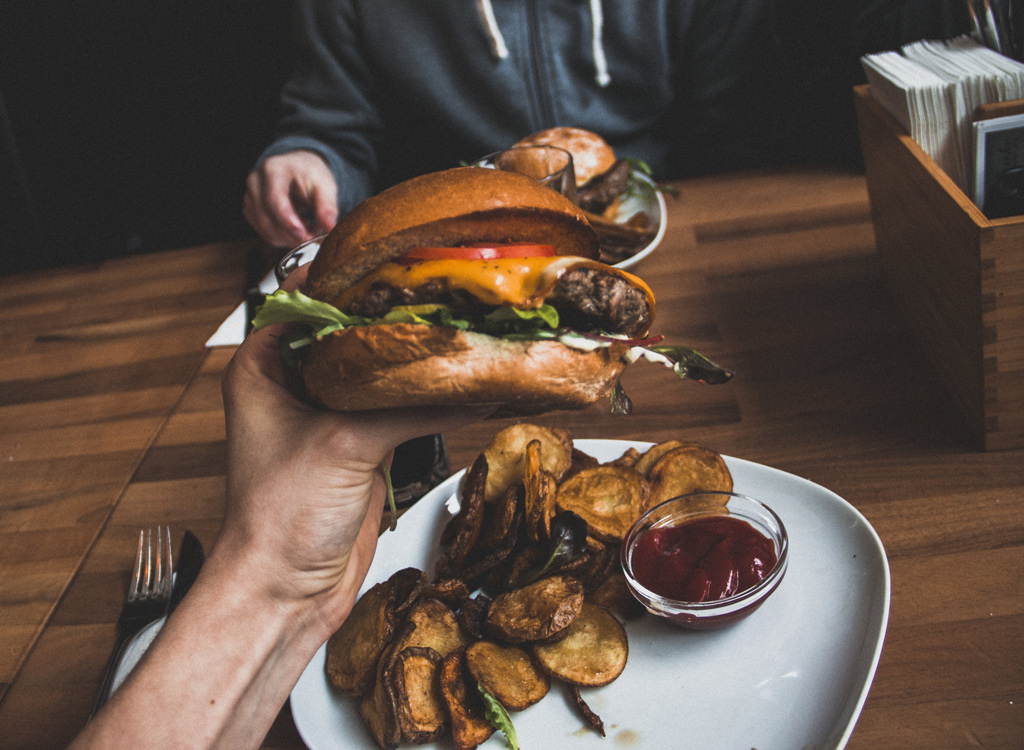
"Sometimes you may just want a burger and fries, and that's OK. You can always enjoy other nutritious foods at other times of the day—it's your overall pattern of eating that matters most. Satisfaction is also about pleasure, and denying ourselves a favorite food will only increase the amount of time we spend thinking about it. Restricting any kind of food can lead to dissatisfaction, guilt, and overeating at a later time," says Heinen. Want to learn tried-and-true tips and tricks to eating the foods you love while revving your fat-burning furnace? Grab a copy of the Zero Belly Cookbook—it comes jam-packed with over 150 delicious recipes to flatten your belly and turn off your fat genes!
